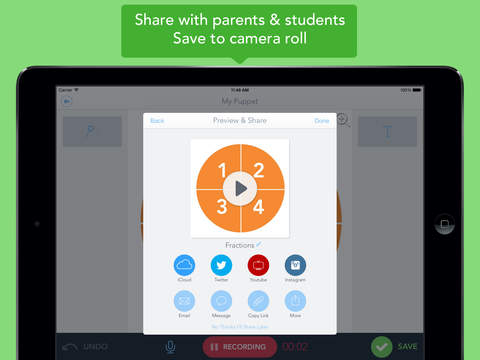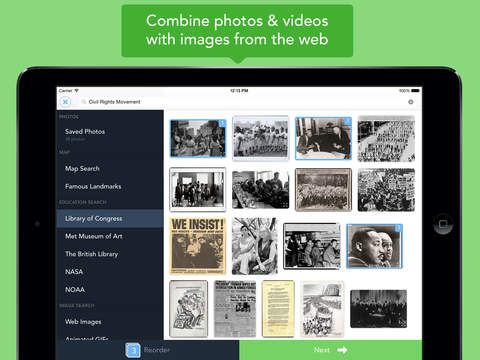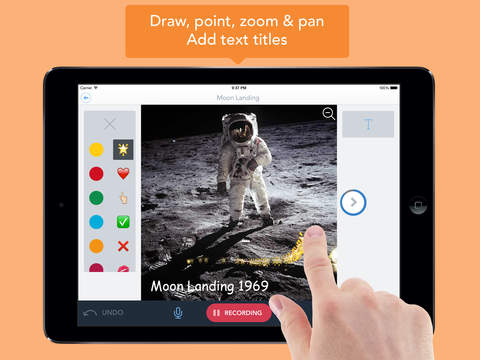Digital Storytelling for Children with Autism
- Nancy Nasser

- Nov 27, 2018
- 4 min read
As an Educational Technology Specialist, I work with many learning support and special needs teachers. In the past couple of years, our school had enrolled an increasing number of students diagnosed with Autism Spectrum Disorders. Autism Spectrum Disorder (ASD) is a term used to describe a set of developmental impairment characteristics that include “impairment of social interaction with others, impairment of verbal and nonverbal communication”, and repetitive patterns of behavior (Mackenzie, 2008, p. 19). Teachers of students with ASD have identified the ill structured problem of difficulty in certain literacy skills such as narrative comprehension and construction. Students with autism tend to perform poorly in writing assignments and story creation that involve capturing imaginative thoughts.
Digital Storytelling as a Solution to the ill-Structured Problem
Students with autism often demonstrate an enhanced response to visual and sensory stimulation (Deruelle, Rondan, Gepner, & Fagot, 2006). According to Dillon and Underwood, storytelling is “the presentation of a story (also known as narrative) that may be achieved through many media and involves perspective taking and meaning making” (Dillon & Underwood, 2012, p.170). Storytelling can be therapeutic for children with autism and the use of technology can help in getting the best out of a child, improving language and social skills and in fostering curiosity and creativity (Dillon & Underwoord, 2012, p. 175). Digital storytelling allows the students to get creative, stretch their imagination and share a narrative they authored. When students with autism are asked to tell a story using an engaging technology tool that doesn’t only give them the option to type but also to choose images and visuals, draw and record their own narration, their confidence in narration construction and comprehension and in their literacy skills is heightened (Mariotti,2012).
Additionally, I will not be surprised to see students with autism writing about topics they wouldn’t normally discuss with their classmates, like their favorite things. According to research, technology can offer the potential for enhanced social interactions and interests (Mariotti, 2012). The study on autistic students using a digital storytelling iPad app showed that the stories created by the study sample were all depicting social situation in which children with autism have struggled in communicating and behaving appropriately (Mariotti, 2012).
There are many options out there for educators who wish to utilize a digital tool for storytelling. For our classrooms, I chose the Shadow Puppet Edu App especially that we have 1-1 iPad programs. I found that this app is thorough in the digital storytelling features it offers and I especially liked the user friendly and intuitive functionality of the app.
Shadow Puppet Edu is a utility app which allows students and teachers to make engaging videos or slideshows out of images, videos, sound clips and voice recordings. The app offers numerous features that are essential for digital storytelling. Some of these features are:
Combine Photos and Videos
Add Narration and Music
Overlay Text and Draw on Screen
Common Core Aligned Ideas
Search for Images and Maps
Export Videos
Share Easily
© All Photos by itunes.apple.com
Autism and Shadow Puppet Edu App
Students as young as five years old are able to narrate stories, explain ideas, or document their learning through the Shadow Puppet Edu App. Since literacy development is identified as a struggle area and writing is one of the toughest tasks for students with autism, this app provides young authors with engaging, meaningful ways to express themselves. Some students with autism like art apps where they can paint and create illustrations. Shadow Puppet Edu allows to create a photo story and add an audio track or commentary. Since oral language often develops before written language, the audio recording feature is a fantastic way to support children with autism in their oral storytelling and conveying their emotions. Also, the accessibility to art and pictures inside the app engages students and sparks their imagination. Students with autism tend to write or speak with ease when presented with pictures and this app definitely offers this. It is a low pressure way to tell a story and narrate their ideas inspired by pictures they choose or the feelings they have inside of them. The result of using a digital storytelling app such as Shadow Puppet Edu with its features is a break of fear and difficulty of creating stories, narration and language development in students with autism This app’s features offer powerful advantage in solving the ill structured problem of narration construction and literacy development. Shadow Puppet Edu is just one technology tool that I think is beneficial in aiding Autism, but it is my conviction that the future of technology will show great benefits for intervention in Autism Spectrum Disorder students.
Check out my screen-cast video below showing how Shadow Puppet Edu can be used for children with autism:
References
Deruelle, C., Rondan, C., Gepner, B., & Fagot, J. (2006). Processing of compound visual stimuli by children with autism and asperger syndrome.International Journal of Psychology, 41(2), 97-106. Retrieved from http://ezproxy.msu.edu.proxy2.cl.msu.edu/login?url=http://search.proquest.com.proxy2.cl.msu.edu/docview/621331744?accountid=12598
Dillon, G., & Underwood, J. (2012). Computer mediated imaginative storytelling in children with autism. International Journal of Human-Computer Studies,70(2), 169-178. Retrieved from http://ezproxy.msu.edu.proxy2.cl.msu.edu/login?url=http://search.proquest.com.proxy2.cl.msu.edu/docview/917312640?accountid=12598
Mackenzie, H. (2008). Reaching and teaching the child with autism spectrum disorder. Philadelphia, PA: Jessica Kingsley Publishers.
Mariotti, M. (2016). An Exploration of Using iPads and Digital Storytelling through weStories with Students who have Autism. Retrieved from http://stars.library.ucf.edu/cgi/viewcontent.cgi?article=2277&context=honorstheses1990-2015
[Shadow Puppet Edu App iPad Screenshots]. (n.d.). Retrieved August 31, 2016, from https://itunes.apple.com/us/app/shadow-puppet-edu/id888504640?mt=8









Comments